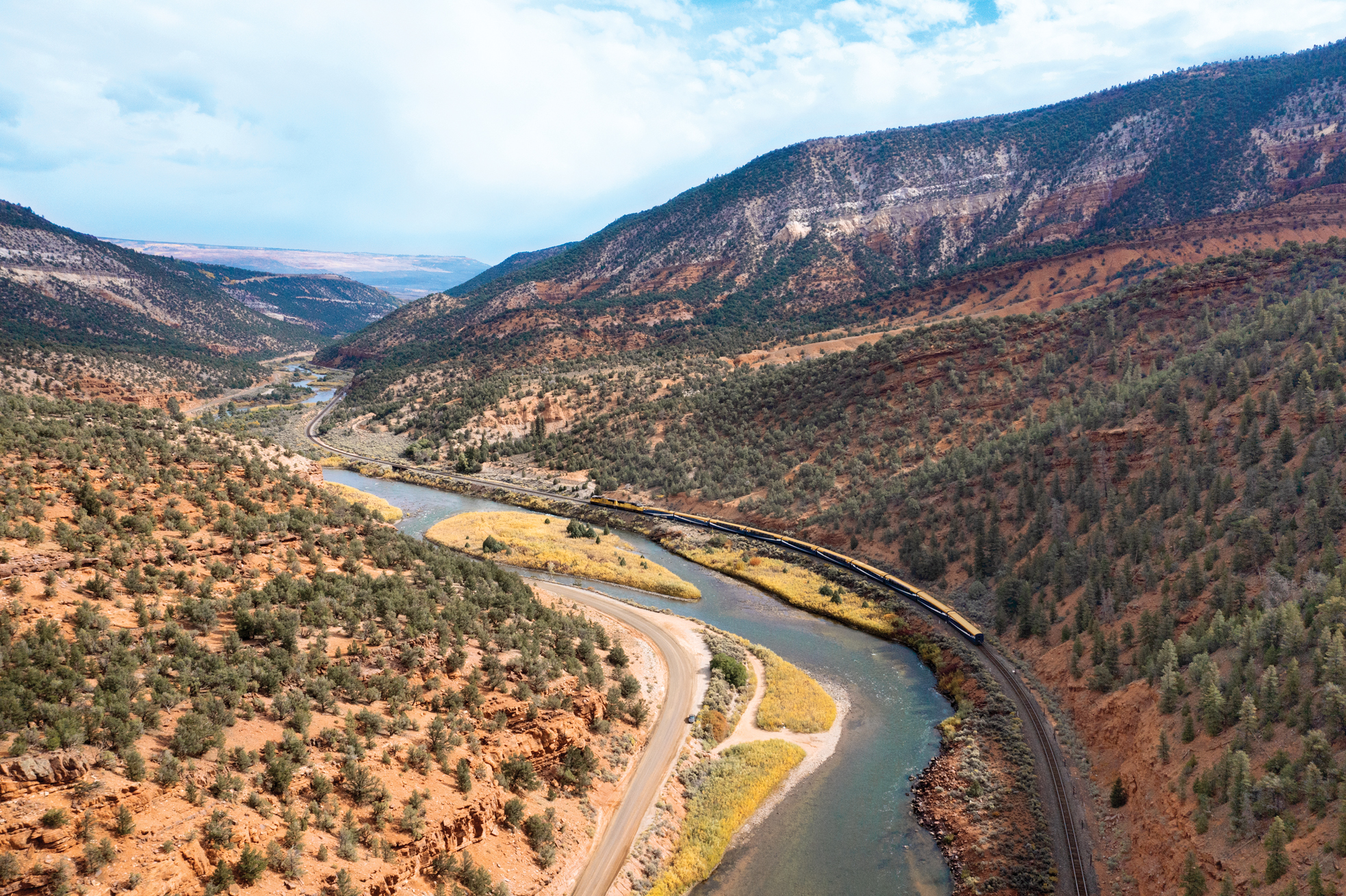As the train chugs west from Denver, Colorado to Moab, Utah, the resemblance to the drive into Kananaskis Country from my hometown of Okotoks, Alberta is striking. As we approach the Rocky Mountains, the sight of rolling foothills and rugged peaks evokes a sense of familiarity and anticipation for mountain adventures, reminiscent of my childhood experiences in Alberta.
I’m with my partner on Rocky Mountaineer’s Rockies to Red Rocks route—the newest trip addition to their portfolio of world-class train journeys and the first one in both the United States and outside of Canada. Echoing my memorable days in Alberta, I am once more setting off for remarkable hiking adventures—this time elevated by train travel (a rare treat for us Western Canadians) on a two-day excursion.
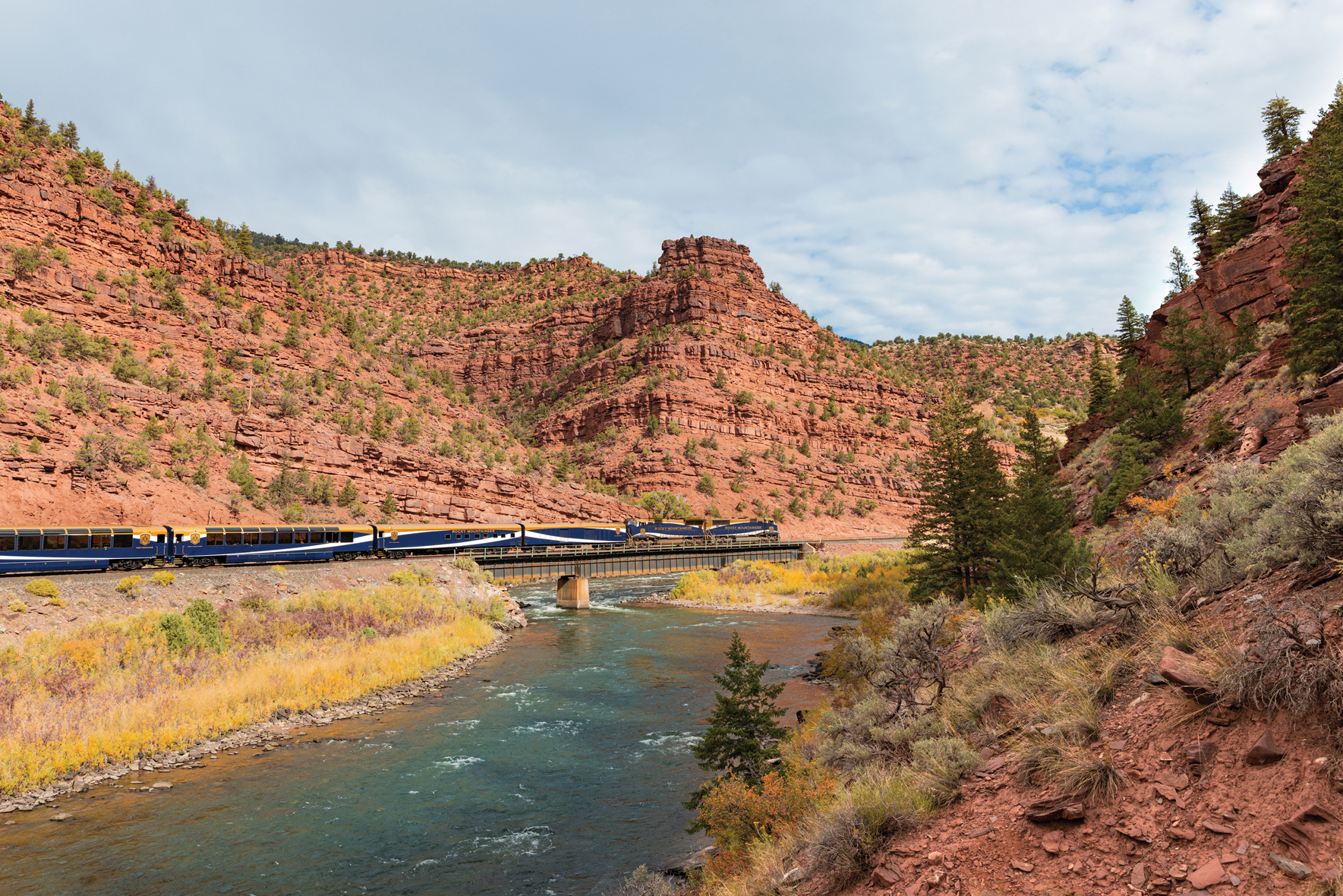 Rocky Mountaineer
Rocky Mountaineer
Unlike many train journeys, you don’t sleep on this one. Rocky Mountaineer prioritizes breathtaking landscapes, fine dining on the train and, on this route, exclusive signature cocktails in the bar car. It’s a luxury reserved for SilverLeaf Plus class passengers and only on Rocky Mountaineer’s US route.
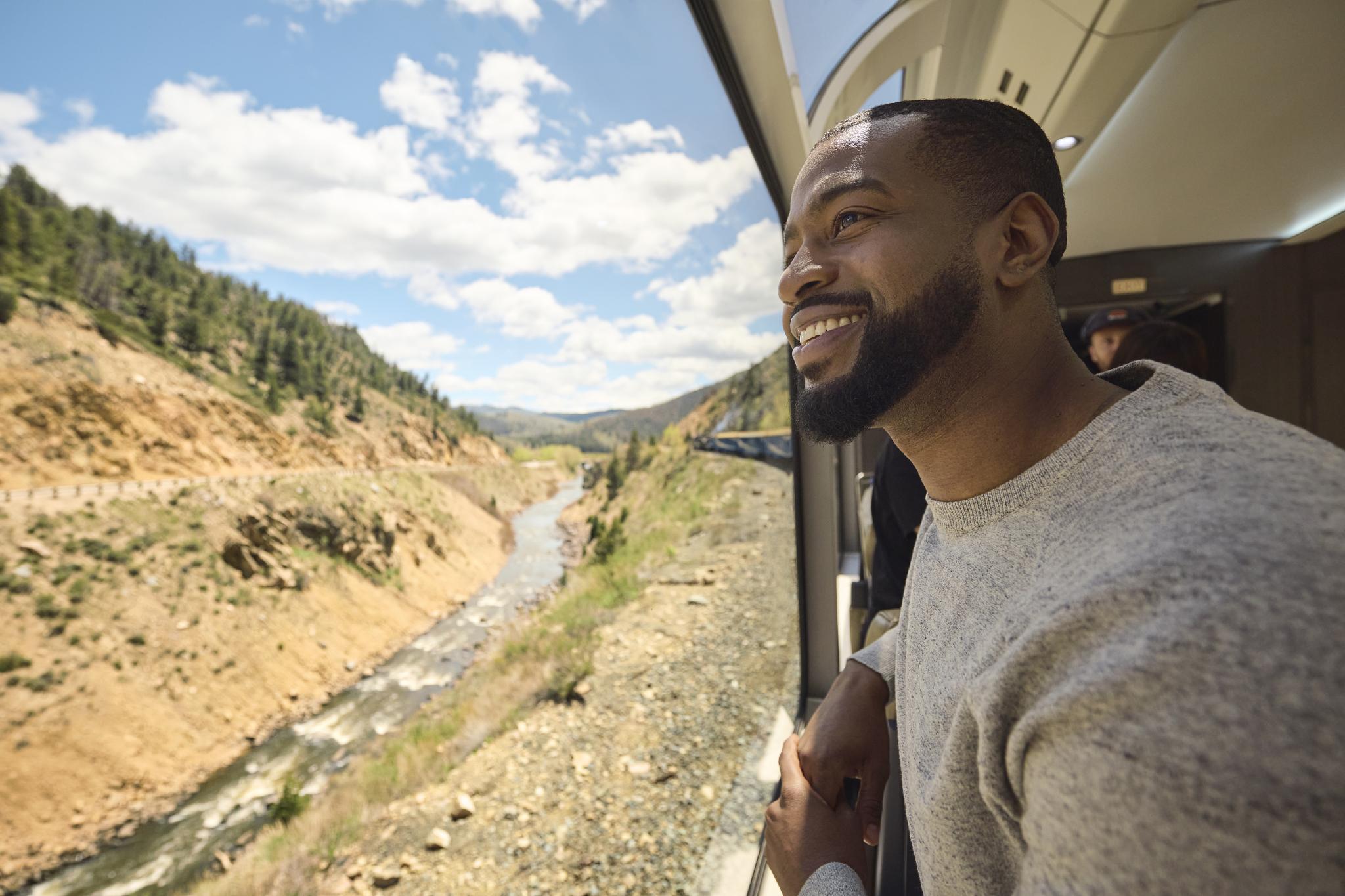 Rocky Mountaineer
Rocky Mountaineer
Our mid-way destination tonight between Denver and Moab is Glenwood Springs, Colorado, but first, we crawl up the mighty passes that were carved into the mountain over a century ago. We’re here for the scenery and excellent storytelling by our carriage host August Bont, so going turtle speed through canyons of rocky golden hues, verdant mountains changing to fall foliage and rushing whitewater means more pictures and perhaps another signature cocktail in the bar car. As we wind our way through the 10-kilometre (six-mile) Moffat Tunnel, Bont explains to us that what now takes us 12 minutes used to take days before businessman and railroad entrepreneur David Moffat eventually bridged the Eastern and Western Rockies together with his tunnel—albeit, with its financial challenges. Trains once had to climb 2,800 metres (9,200 feet) over the mountain—but now, they only go up to just 853 metres (2,800 feet) before a tunnel transports you from breathtaking landscapes on one side of the Continental Divide to equally captivating views on the other side.
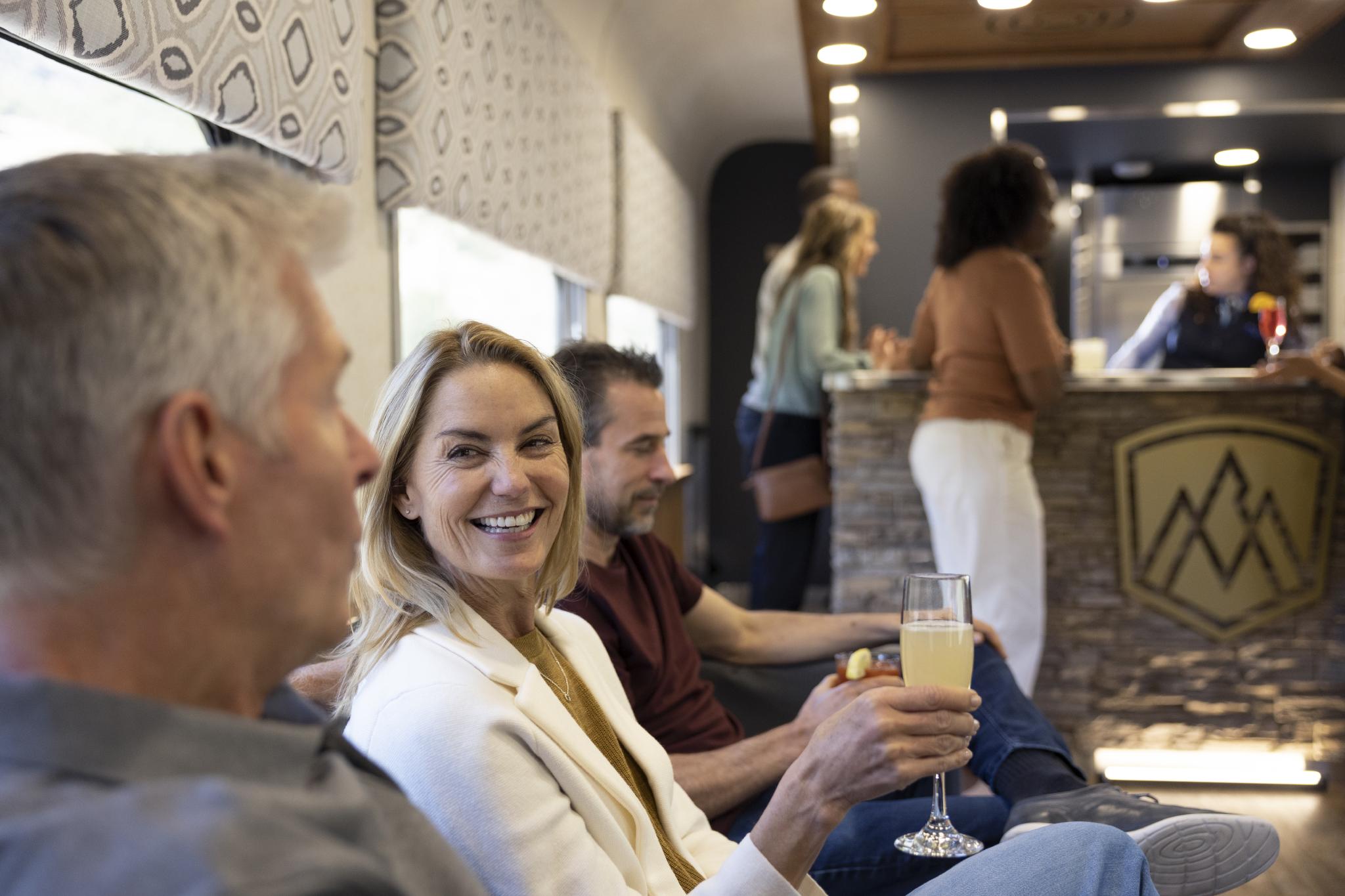 Rocky Mountaineer
Rocky Mountaineer
Bont continues to entertain us with stories such as one of a notorious train heist in June of 1907 that occurred on the very tracks we were travelling. The culpable outlaw, Harry Logan, fled into challenging terrain; however, the determined local sheriff successfully tracked him down. Bont says that the Sheriff was able to do so because he had a 1907 Mustang. My reaction is audible proof that Bont’s jokes aren’t just for dads.
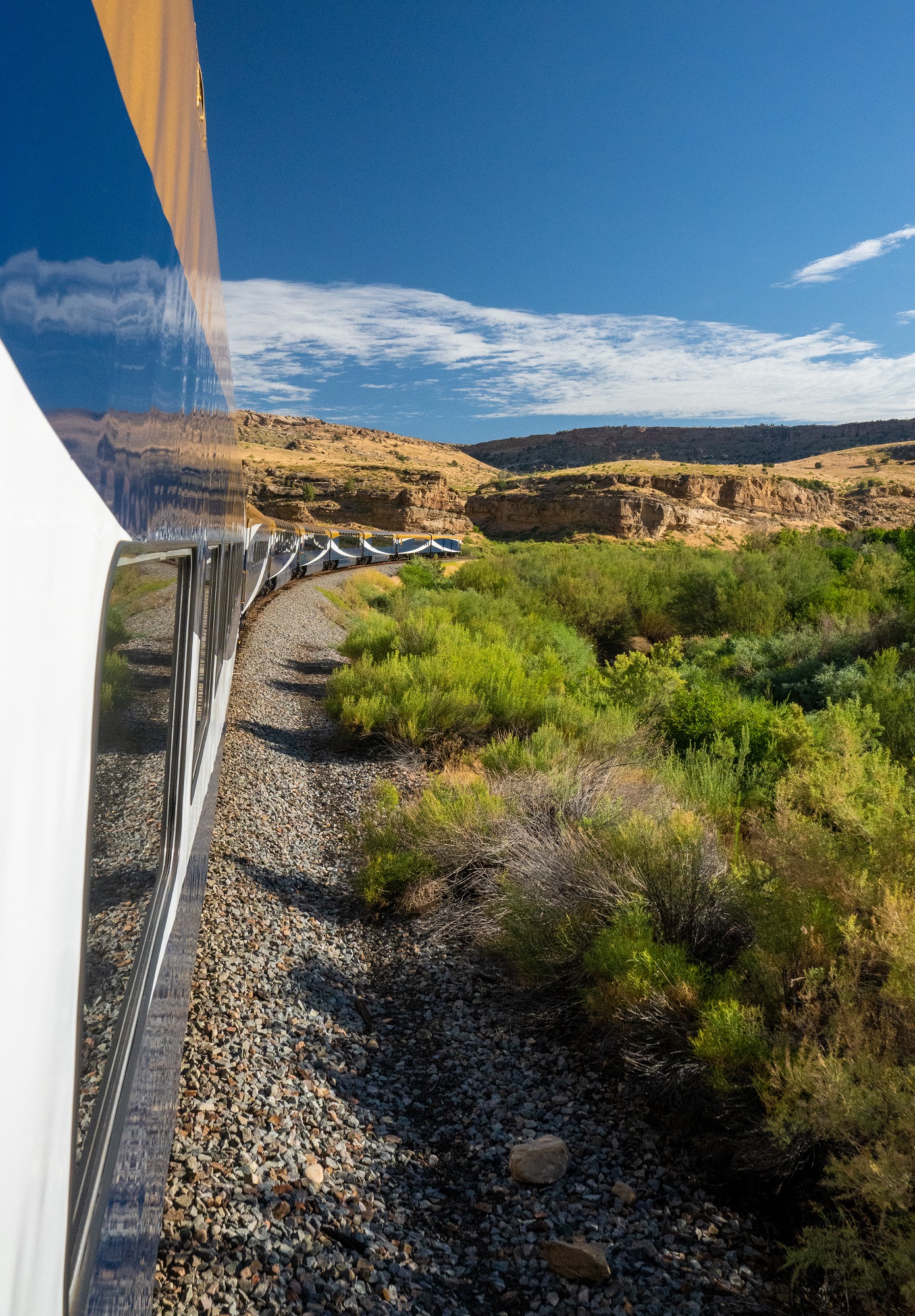 Jonny Bierman
Jonny Bierman
When we join the Colorado River, it’s more of a creek this close to the headwaters near the Continental Divide. After a day of great food, hilarious dad jokes, and learning about the region's locomotive history, I found myself spending more time in the bar car with a Glenwood Old Fashion sharing stories with other riders and gazing out at whitewater enthusiasts paddling their way into Glenwood Springs alongside us.
Following a rejuvenating session at the hot springs vapor caves at Yampah Spa and an overnight in Glenwood Springs, it’s time to hit the rails for our second and final day. Still straddling the Colorado River, the scenery transitions from jagged peaks to a paradise of stunning red rock formations. As this transition occurs, the Colorado becomes more gentle and frequented by recreational paddlers—and this is where we learn about the “Colorado Salute.” Cheeky river revellers flashing their derrières dot the river in what is apparently a tradition for passing trains—especially those with passengers and the “new kid on the block” when it comes to trains in town, according to Bont. I’m very certain the train engineers' choreographed horn blasts signalling our impending arrival was no mere coincidence either.
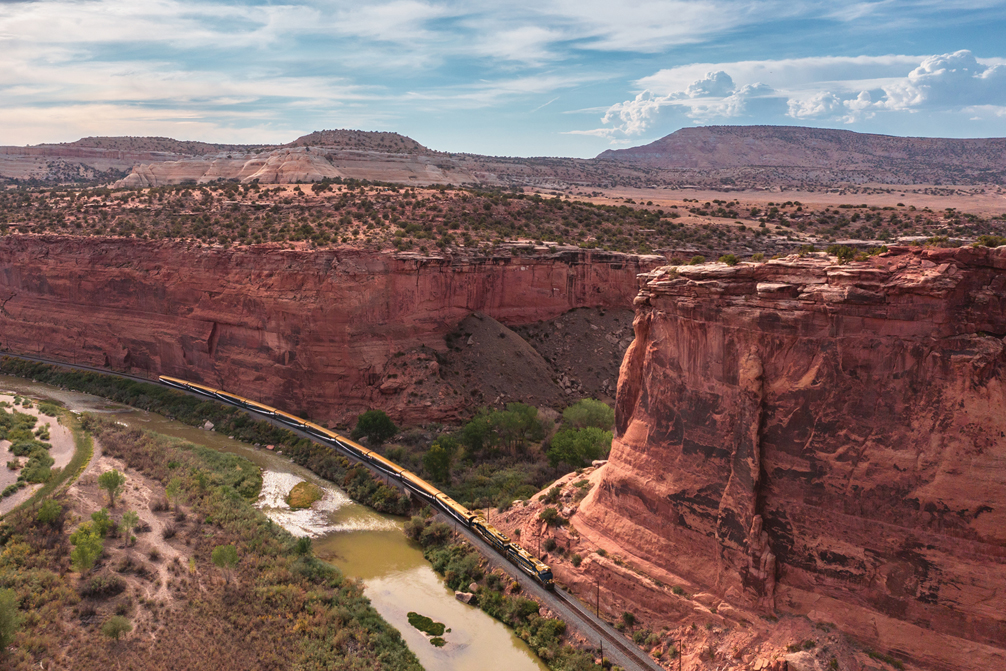 Rocky Mountaineer
Rocky Mountaineer
Ruby-hued valleys with scarlet geological wonders now towered over either side of the tracks and river in equally entertaining scenery. As we pass a striking red canyon, Bont points out a series of steps chiseled into the rockface. These steps, crafted by Indigenous Peoples over a thousand years ago, served as a pathway to access the river for sustenance and water. These enduring remnants are a testament to the fact that even the earliest trains were “new kids on the block” in this storied landscape.
We approach Moab as our time on the rails nears its conclusion, but our adventure is far from over. Just like the generations of train travellers before us who we heard so much about, we pull into Moab with days of hiking on the horizon and endless trails to explore.
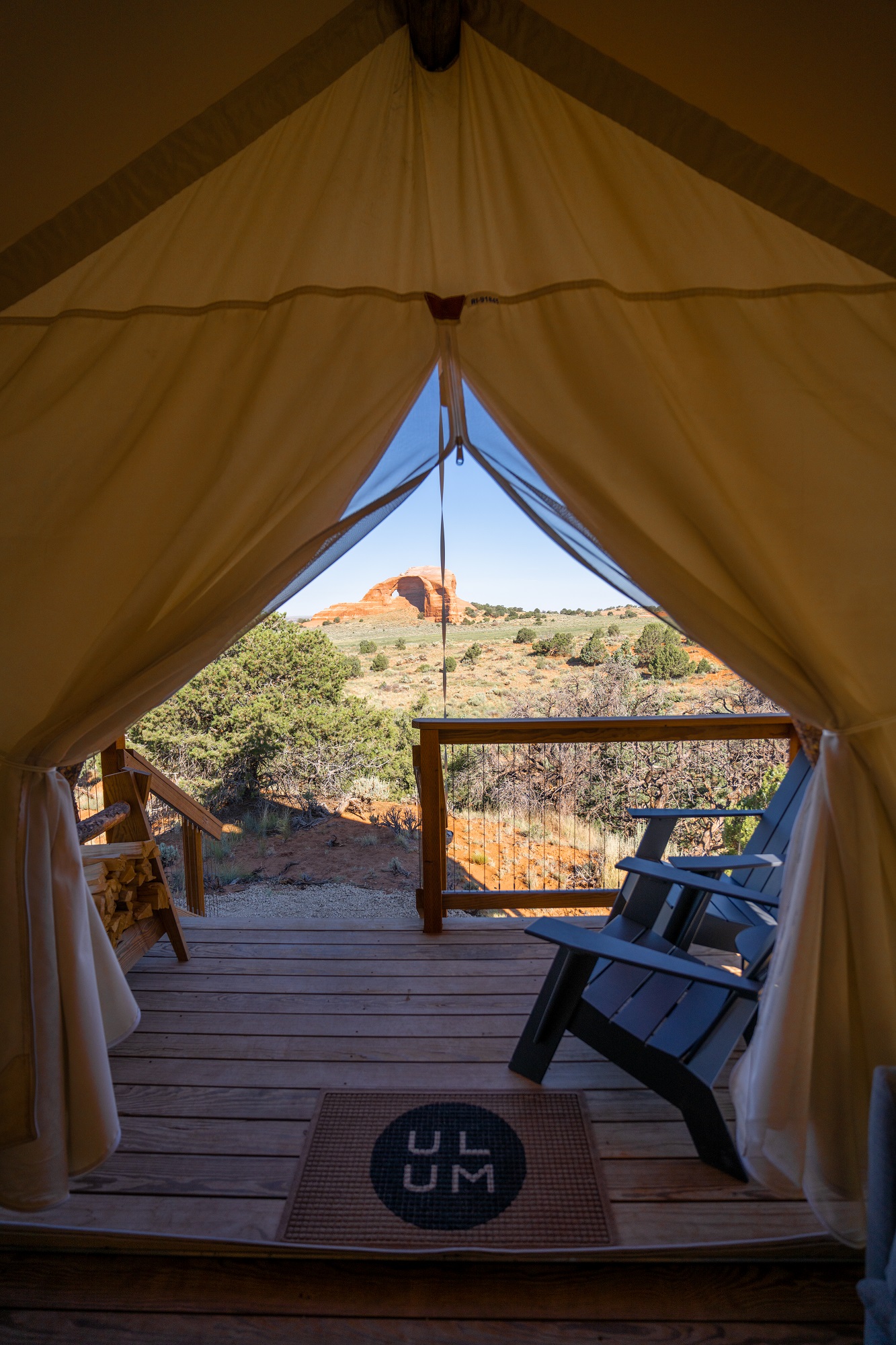 Jonny Bierman
Jonny Bierman
We’re staying at ULUM Moab—a luxury glamping resort newly opened this year by Under Canvas. Our new basecamp comes complete with three pools, numerous games, live music in the evenings, guided meditation and yoga, movie nights and a glamping tent fit for royalty. I liken it to summer camp—except in Moab, autumn is the best time for hikers for cooler temperatures. From the balcony of any tent in ULUM is a striking view of Looking Glass Rock, a prominent and protected red rock formation in the area accessible for hikers.
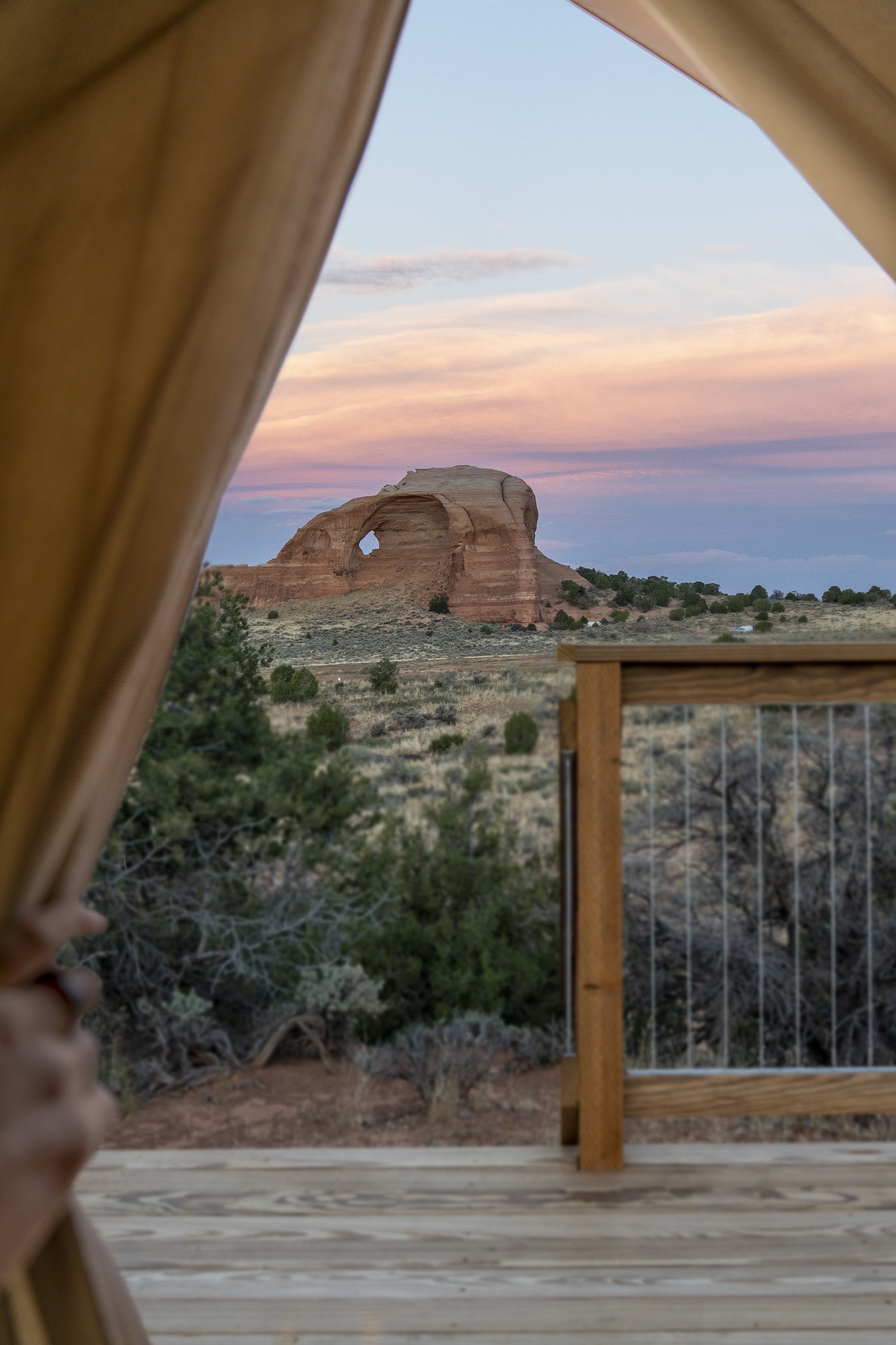 ULUM
ULUM
We join Navajo guide Louis Williams, founder of Indigenous guiding outfitter Ancient Wayves for three hikes at Mule Canyon Kiva, House on Fire and Cave Towers. Each location boasts a rich history and an abundance of ancient artifacts which help to unravel and narrate fascinating stories of the past. “Here's where they would have gathered water and held ceremonies,” Williams says, gesturing towards a spring from the canyon ridge where we stood. “And there’s the ‘escalator’ for transporting people down,” he jokes, pointing to a set of stairs carved into the stone, just like those we had seen from the train. Williams elaborates that the area's Indigenous people include members of the Ute, Navajo, Paiute, Hopi, Dene and Zuni tribes. While indicating some Pueblos (ancient stone dwellings constructed from stone and mud), he says, “There are a lot of different Pueblos, and descendants still live in structures just like these, especially in New Mexico. People that were living here, their ancestors were living here in the ground, and they were called the basketmakers. But we don't see where they lived because these were pit homes. Really nice structures were built into the ground, and that was before they built rock structures. That's before pottery. They were master weavers, they were basketmakers, and this was all about 1000 BC.”
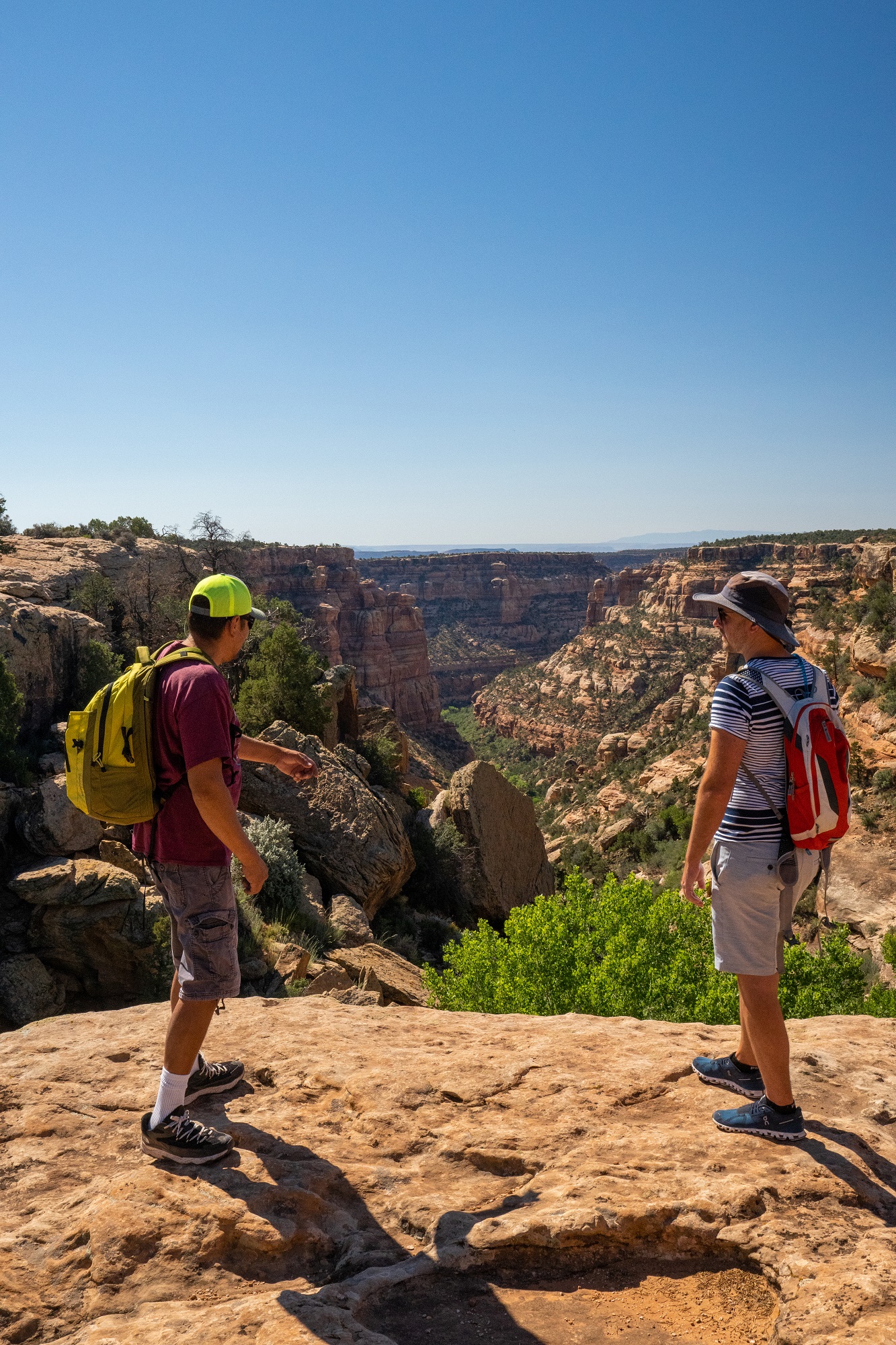 Jonny Bierman
Jonny Bierman
Hiking along, we delve deeper into the local ecology, discover fragments of pottery and learn about Williams' family. With a wealth of ancestral knowledge about the region's ecology and trail networks, Williams became the first Navajo guide to obtain a permit for leading tours in Bears Ears National Monument. His extensive expertise in conservation and ecology has also earned him a position representing Indigenous Relations on the Bears Ears National Monument Advisory Committee.
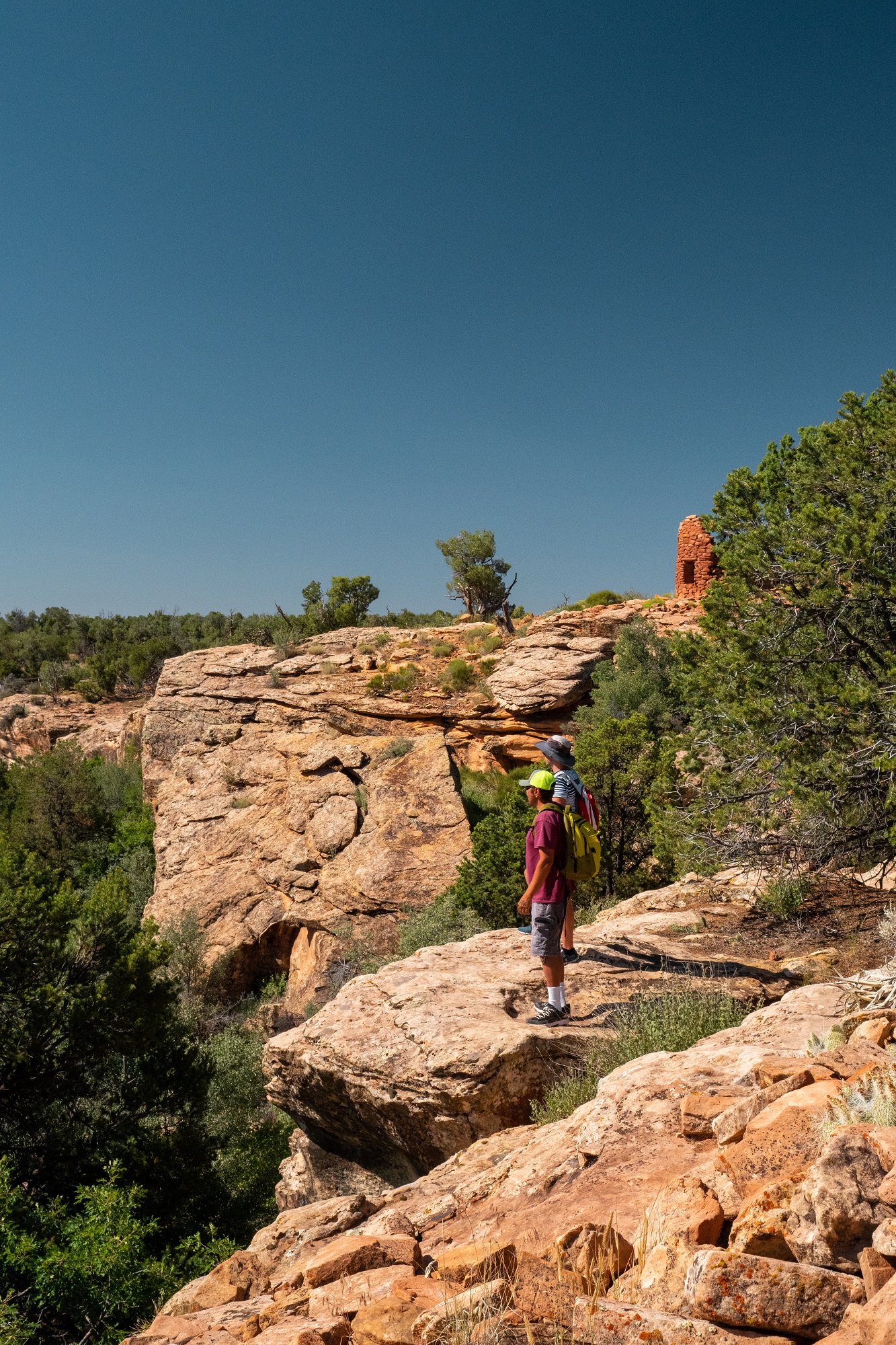 Jonny Bierman
Jonny Bierman
Following our hikes with Williams, we ventured out on our own to explore some nearby red rock features like Corona Arch, Grandstaff and Natural Bridges National Monument. Over the following days, we continued to delve into captivating trails and an exhilarating rafting experience on the Colorado River that we travelled beside for two days on the Rocky Mountaineer. In a harmonious connection, we seamlessly merged classic transportation on the train with trails once trodden by ancient civilizations. However, while each location we explored throughout Utah was distinct and spellbinding in its own way, it was the mesmerizing interplay of light and shadows during the sunrises and sunsets over Looking Glass Rock at ULUM that truly captivated us. As fate would have it, our most cherished red rock formation memories and hike turned out to be at the place that had been right before our eyes all along.


